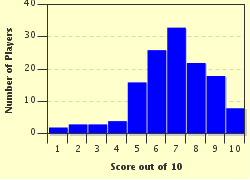Quiz Answer Key and Fun Facts
1. You are home from work an hour late. Daisy, your Yorkshire terrier and Spike, your Siamese cat meet you in the hall with rapidly swishing tails. Do they both mean that they are happy to see you?
2. If a dog's eyes narrow, does it mean the same as when your cat's eyes slowly narrow?
3. Do both dogs and cats both "play bow" to ask for playtime?
4. Dogs love to have their bellies scratched. The ones I know can't get enough. And the scratcher can be anyone. What about cats? Do they enjoy belly rubs or scratches?
5. While we're talking about bellies in feline and canine body language, both animals will occasionally lie on their back at your feet and expose their undercarriage. Do they mean the same thing with this gesture?
6. If a dog and a cat both have their ears perked up on their heads, what are they conveying? Is it the same thing?
7. Which animal, cat or dog, is an obligate carnivore? While this isn't strictly about body language, it does affect the animal's behavior.
8. When Daisy the terrier play bows and Spike the Siamese indicates that he wants to play, will you play the same types of games? By asking you to play do they mean the same things?
9. You come home to a dark house; the electricity is out. The weather is stormy and thunder claps are heard approaching. Spike the cat and Daisy the dog are sitting by the door with their ears flat on top of their heads. Are they conveying the same emotions?
10. We've been taught that dogs say "Woof" and cats say "Meow." Are there any vocalizations that are the same, with the same meaning for both Daisy the dog and Spike the cat?
Source: Author
hpreed62
This quiz was reviewed by FunTrivia editor
rossian before going online.
Any errors found in FunTrivia content are routinely corrected through our feedback system.

